Procurement risk management is a crucial practice that organizations must adopt to identify, assess, and mitigate risks within their procurement function. By proactively managing risks, organizations can ensure the integrity of their supply chains, minimize disruptions, and align procurement strategies with overall organizational goals. This article explores the importance of risk management in procurement, key components of a risk management framework, and strategies to effectively manage risks in procurement.
In this article
Part 1. An Overview of Procurement Risk Management
Procurement risk assessment encompasses a range of practices aimed at identifying, assessing, and mitigating risks within the procurement function. It involves adopting proactive measures to minimize potential disruptions, aligning procurement strategies with organizational goals, and safeguarding the overall integrity of supply chains. By effectively managing risks, organizations can enhance their ability to meet customer demands, maintain operational efficiencies, and achieve sustainable growth.
Part 2. The Importance of Risk Management in Procurement
The significance of risk management in procurement cannot be overstated. Here are a few points that highlight the importance of risk management in procurement:
1. Helps in Identifying and Evaluating Potential Risks
Procurement risk management enables organizations to identify and evaluate potential risks associated with suppliers, contracts, market volatilities, and geopolitical factors. By gaining clarity on these risks, organizations can make informed decisions and develop contingent plans to address uncertainties effectively.
2. Helps Organizations Build Resilience
Risk management in procurement helps organizations build resilience and ensure business continuity. By implementing robust risk mitigation strategies, organizations can anticipate and respond to disruptions, such as supplier bankruptcies, natural disasters, or trade conflicts.
3. Improves supplier selection and relationship management
An effective procurement risk register framework improves supplier selection and relationship management. By conducting comprehensive risk assessments, organizations can evaluate suppliers' financial stability, ethical practices, and compliance with regulatory requirements.
Part 3. Components of a Risk Management Framework
A well-designed procurement risk management framework underpins effective procurement risk management. Key components of such a framework include:
1. Risk Identification:This involves systematically identifying risks that could potentially impact procurement operations, such as supply shortages, quality issues, or non-compliance with legal and regulatory requirements.
2. Risk Assessment:Once risks are identified, a thorough analysis is conducted to assess their potential impact and likelihood of occurrence. This step helps organizations prioritize risks and allocate appropriate resources to their mitigation.
3. Risk Mitigation:This component focuses on implementing strategies and controls to minimize or eliminate identified risks. It includes measures like diversifying supplier sources, establishing contingency plans, negotiating robust contracts, and implementing technology solutions to track and monitor supply chain activities.
4. Risk Monitoring and Review:A continuous monitoring system is crucial to identify emerging risks and reassess existing risks. By reviewing the effectiveness of risk mitigation strategies, organizations can make necessary adjustments and ensure the ongoing success of procurement risk management efforts.
Part4. 5 Strategies for Managing Risks in Procurement
Procurement risk assessment is essential for any procurement process in order to ensure that the company’s resources are used efficiently. Here are five strategies that can be used to manage risks in procurement:
1. Supplier relationship management
Establishing a strong relationship with suppliers is important in order to understand their capabilities, ensure that products or services are delivered on time, and foster a collaborative environment for continuous improvement and innovation.
2. Supplier consolidation
Consolidating suppliers and vendors can help to reduce costs and improve efficiency by streamlining procurement processes, creating leverage for negotiating better prices, and increasing overall supply chain visibility and control.
3. Enable procurement transparency
Establishing a transparent procurement process allows for more accurate and timely decisions by providing stakeholders with clear visibility into sourcing activities, supplier performance, and overall procurement strategies.
4. Spend analysis
Analyzing spending patterns can help identify areas where costs can be reduced, and potential risks can be avoided. By using advanced analytics and data-driven insights, organizations can optimize procurement spend, identify cost-saving opportunities, and make more informed decisions regarding supplier selection, contract negotiations, and overall budget allocation.
5. Compliance
Adhering to industry standards and regulations is essential in order to minimize legal and financial risks. Ensuring compliance helps organizations avoid penalties, reputational damage, and potential disruptions to the supply chain.
Part 5. Creating a Procurement Risk Management using EdrawMax
Wondershare EdrawMax is a powerful risk management plan diagram creation tool. It provides a vast selection of templates, symbols, and shapes to help users create professional-looking risk management plan diagrams in minutes. It has a drag-and-drop feature that makes it easy to customize the diagrams. The steps to create a diagram of a procurement risk assessment plan are given below:
Step 1: Launch and create a new document
Launch the software and create a new document by clicking the 'New' button. Then, choose the appropriate document size and orientation.
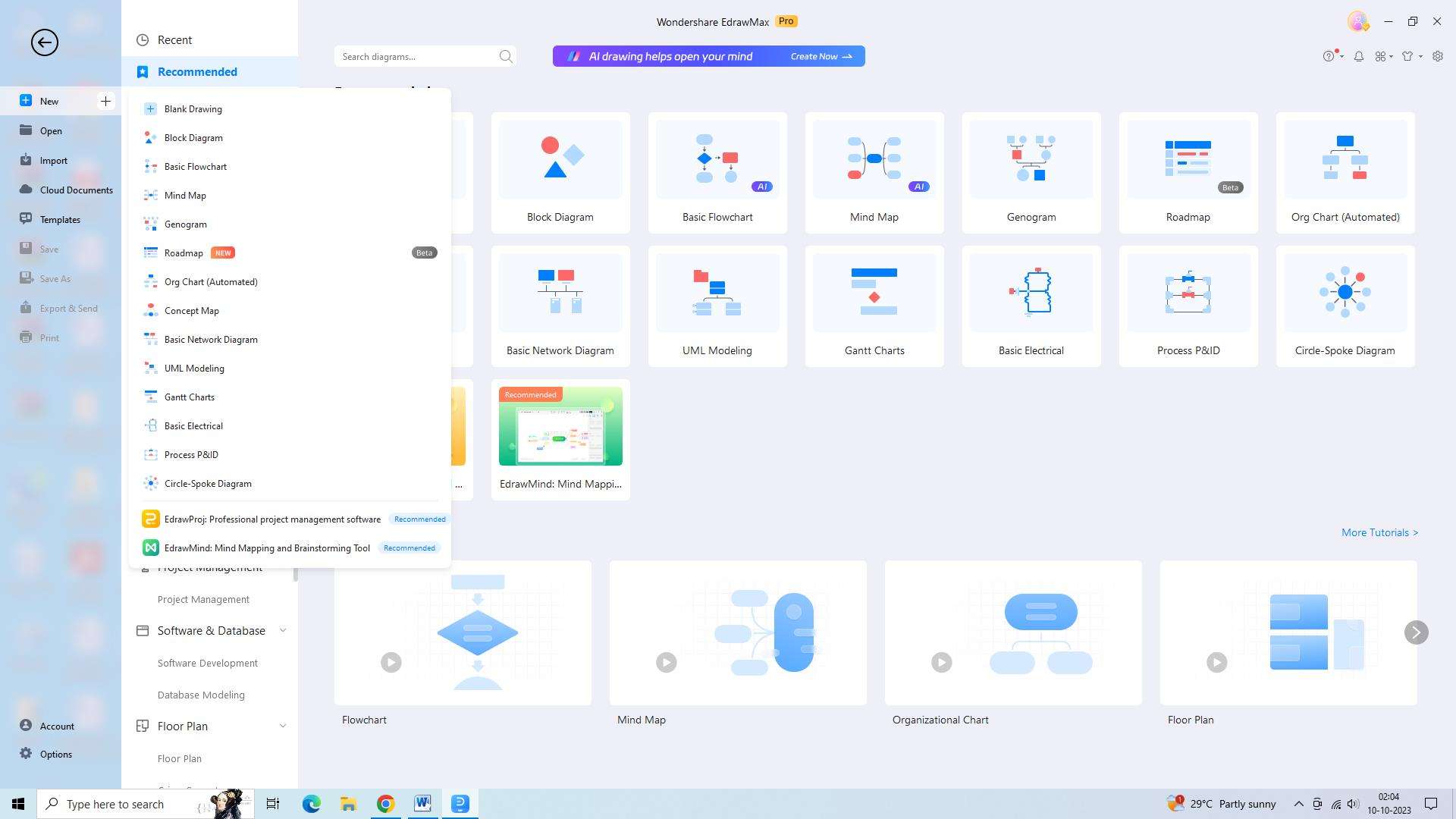
Step 2: Search and select the relevant template
Search for 'procurement risk management’ and select the relevant template. Review the available templates and choose the one that best suits your needs.
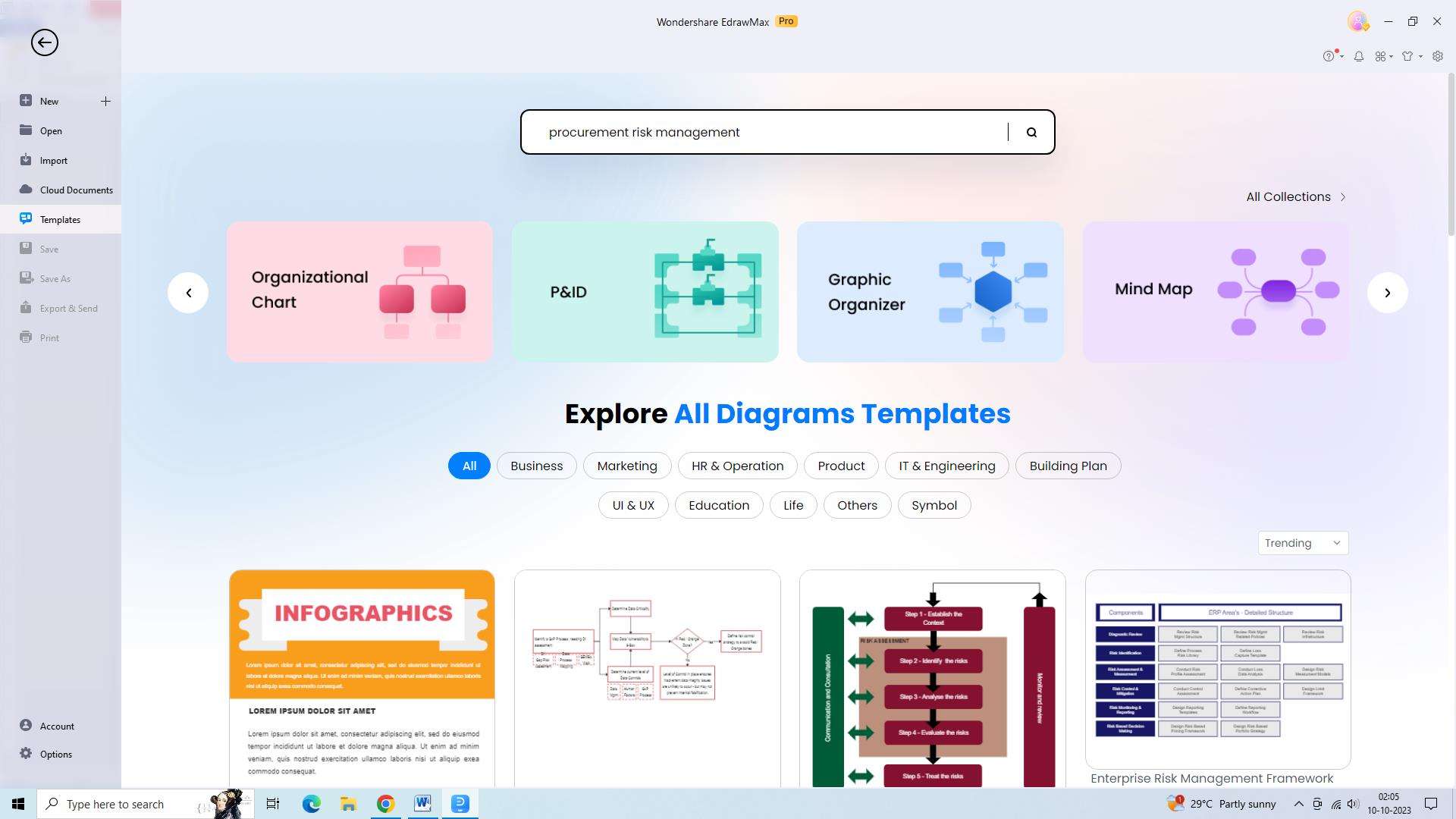
Step 3: Choose shapes and symbols
You will be presented with shapes and symbols related to the topic. Browse through the available shapes and symbols to find the ones that accurately represent your procurement process.

Step 4: Join shapes to create a process diagram
Utilize the arrow and line tools to join the shapes and create a diagram showing the process. Experiment with different types of arrows and lines to create a visually appealing and easy-to-follow diagram.
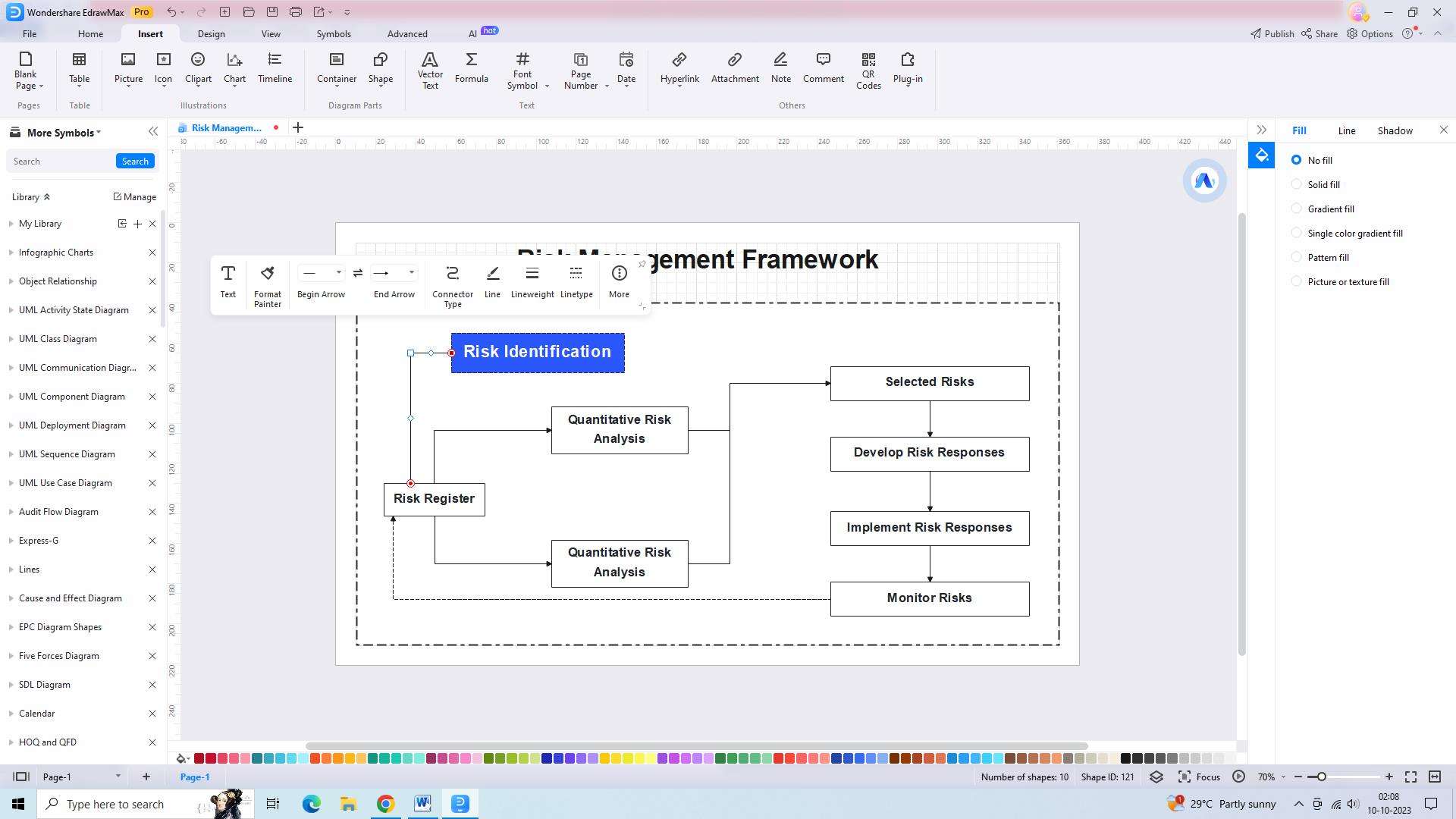
Step 5: Customize shapes
Double-click on the shapes to customize them according to your needs. Modify the shape's size, color, or text properties to accurately represent the elements of your procurement risk management process.
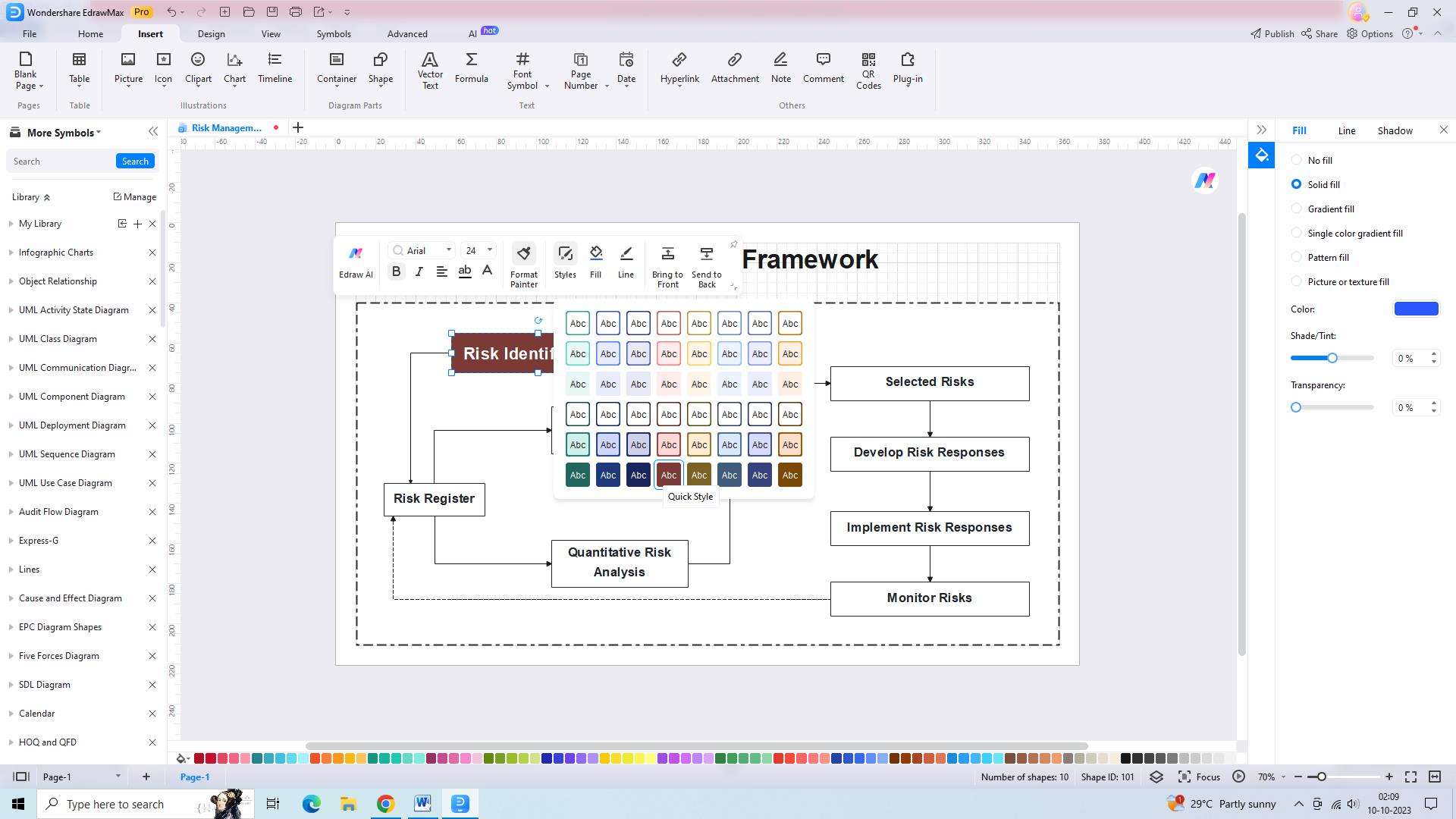
Step 6: Enhance chart appearance with color and formatting
Utilize the color palette and formatting tools to make the chart look better. Experiment with different color combinations and formatting options to enhance the visual appeal and clarity of the chart.
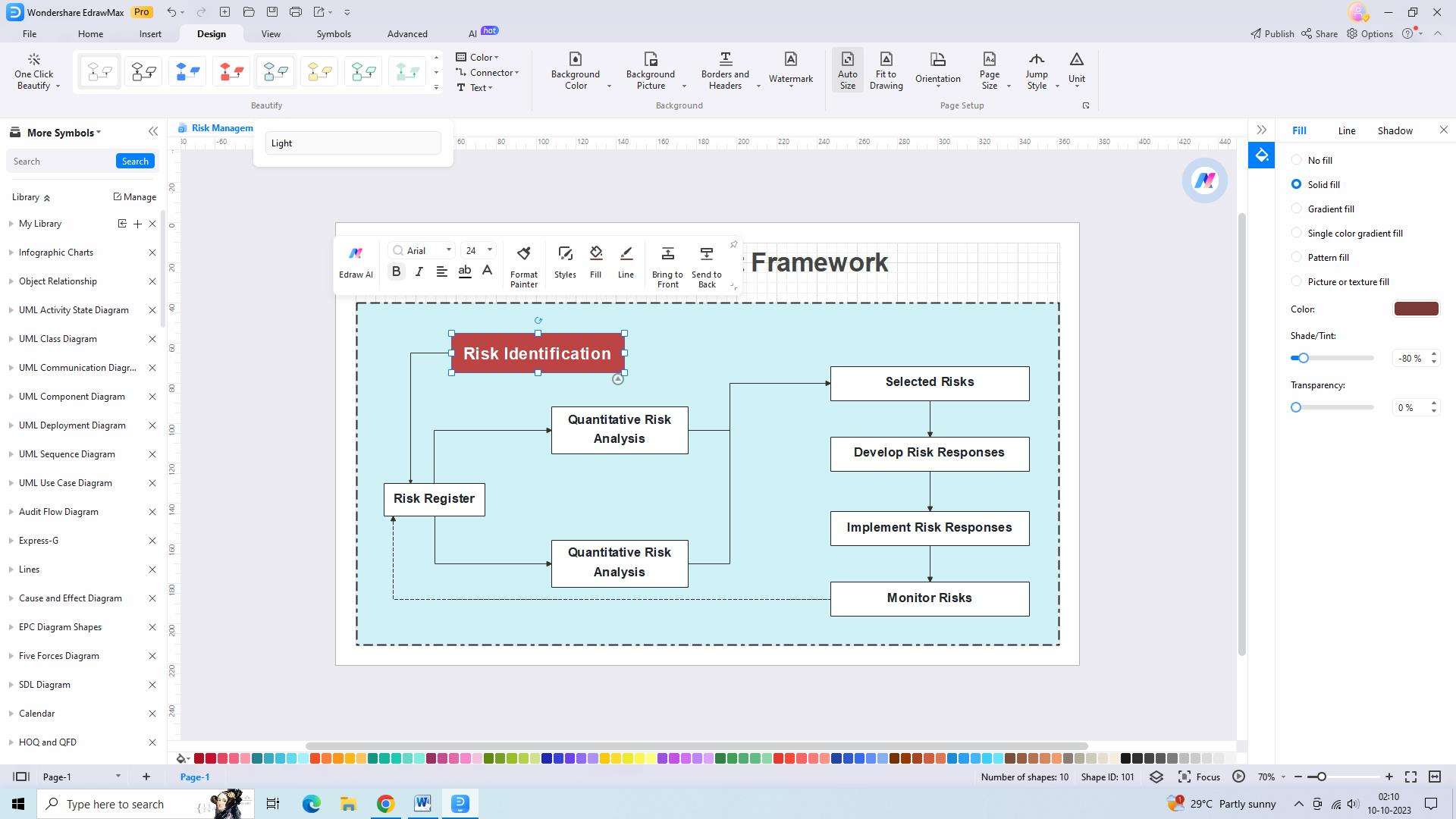
Step 7: Add labels, titles, and descriptions
Add labels, titles, and descriptions using the text tool. Use descriptive text to label each element of the diagram, provide titles for different sections, and include descriptions to provide additional context or explanations.
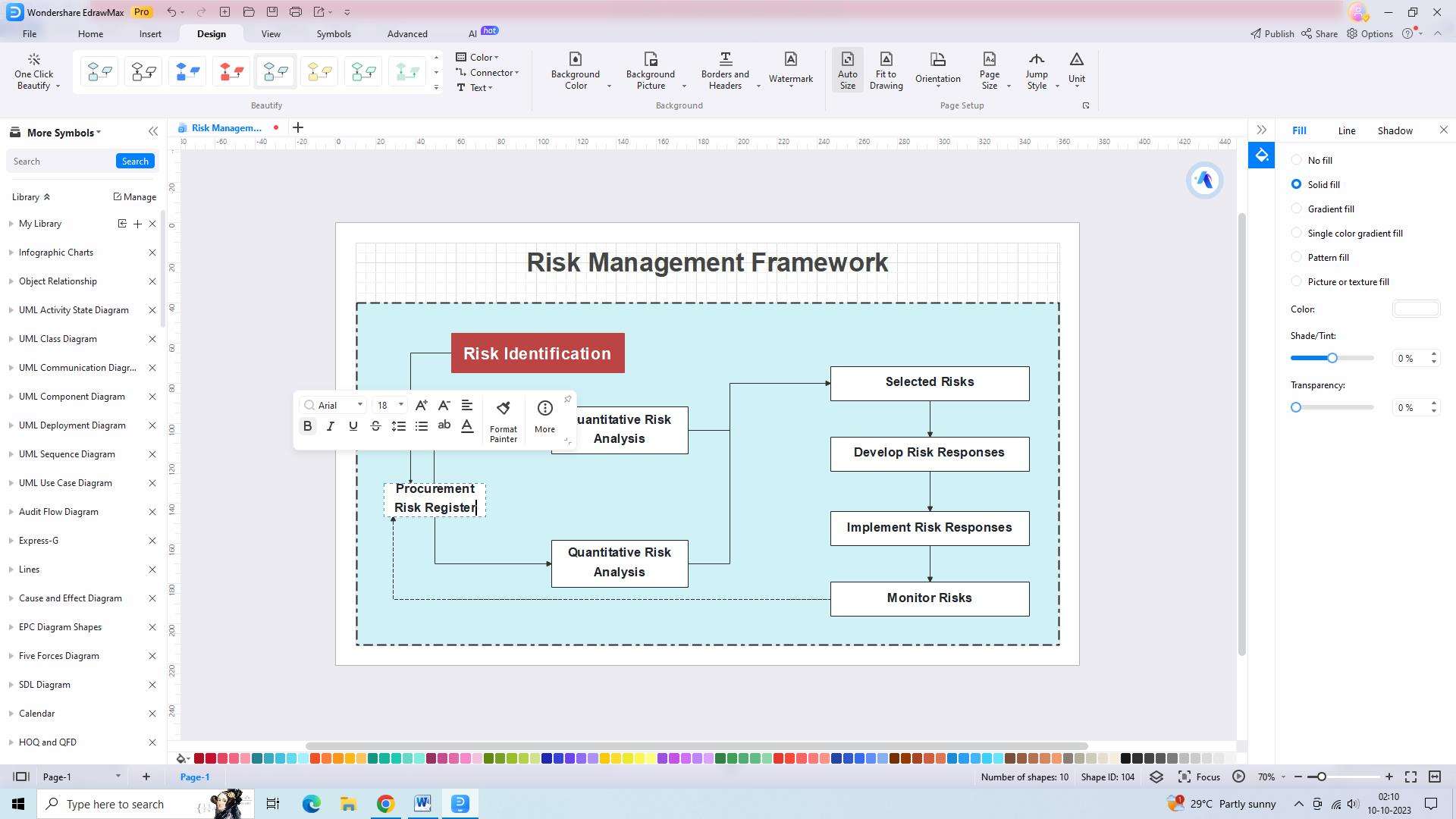
Step 8: Save and export the document
Save the document and export it in the format of your choice. Choose a suitable file name and location to save your document, and then select the desired file format for exporting, such as PDF, JPEG, or PNG.

Conclusion
Effective procurement risk assessment is essential for organizations to navigate uncertainties, build resilience, and optimize their procurement processes. By implementing strategies such as supplier relationship management, spend analysis, and compliance with regulations, organizations can mitigate potential risks, enhance efficiency, and achieve sustainable growth.




